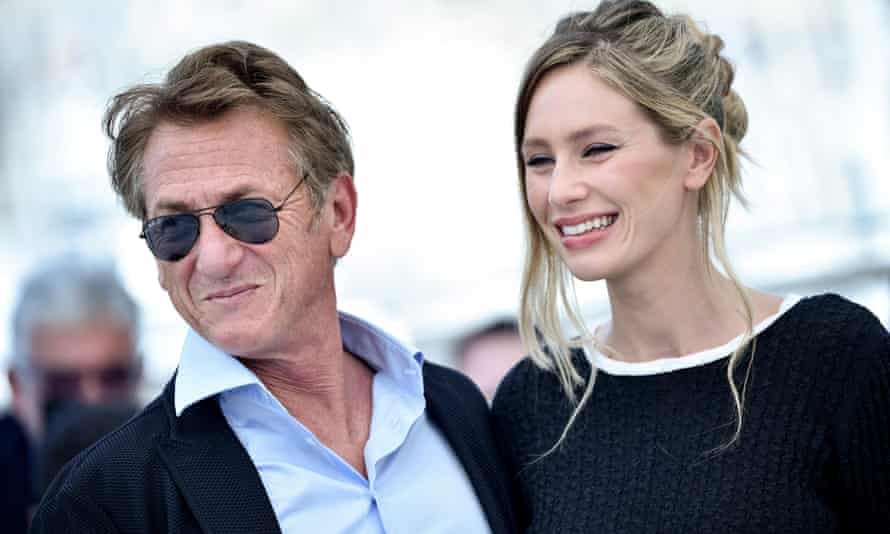Issued on: 11/07/2021 -

Cannes (France) (AFP)
Actor-director Sean Penn, who mobilised a huge network to help with the Covid crisis in the US, made it clear on Sunday that he does not miss the Trump administration.
At the Cannes film festival to present his new film "Flag Day", Penn responded to a question about the pandemic response in the United States in typically forthright style.
"When my team and I would come home from test and vaccination sites at night... watching the maddening news, it really felt like there was someone with a machine gun, gunning down communities that were the most vulnerable from a turret at the White House," Penn said of former president Donald Trump's administration.
"We were, not only as a country but as a world, let down and ultimately neglected, misinformed, had truth and reason assaulted, under what was in all terms, an obscene administration, humanly and politically," he added.
Penn, who has a history of highly energetic aid work from Haiti to Hurricane Katrina, used his non-profit group to set up his country's biggest Covid-19 testing site in Los Angeles in the early months of the pandemic.
His group, CORE Response, later set up vaccination sites in LA and Chicago, along with food distribution for affected communities.
Penn plays a very different role in his new film, which he also directed, as a deadbeat father constantly disappointing his daughter, played by his real-life off-spring, Dylan Penn.
He admitted he was reluctant to both act and direct, but was finally won over by Matt Damon.
"The last effort I made to not play it was when I sent the script... to Matt Damon who was generous enough to give it a quick read and call me, not to say that he can do it, not to say he can't do it, but to say that I was a stupid schmuck not to do it and take this opportunity to act with my daughter," Penn told reporters.
Dylan, Penn's child with ex-wife Robin Wright, said their relationship was nothing like the distant one in the film, despite her father's busy acting schedule.
"My parents were extremely present throughout my childhood. The fact that they took us out of Los Angeles where the industry is the focal point was an amazing decision in leading us to a normal upbringing," she said.
Her father said that, if anything, they had the opposite problem.
"While there were periods of time when I was away... once you get done with a job, you're the only parent who's there 24/7 -- that's when the kids get upset, when you're there all the time!" he said, laughing.
"Seems like they still like me OK, though."
"Flag Day" is among 24 films competing for the top Palme d'Or prize at the Cannes festival, which runs until Saturday.
© 2021 AFP
‘Openly neglected by an obscene administration’: Sean Penn criticises Trump’s handling of pandemic
Premiering new film Flag Day in Cannes, director and actor likens former president’s approach to ‘someone with a machine gunning down communities that were most vulnerable’
Sean Penn has criticised Donald Trump’s handling of the coronavirus pandemic, likening the former president’s approach to someone opening fire on vulnerable communities.
Speaking at a press conference following the premiere of his new film, Flag Day, Penn said:
“We were — not only as a country, but as a world – let down and openly neglected, misinformed. We had truth and reason assaulted under what was in all terms an obscene administration.
“When my team and I would come home from test and vaccinations sites at night, particularly during testing under Trump, to maddening news — it felt like someone with a machine gun gunning down communities that were most vulnerable from a turret at the White House.”

Penn, who wore a mask when he was not speaking, said he was optimistic about the future under the new administration.
“In the transition to the task force that President Biden put together, it was really that feeling like a sun was rising. There was no effort of integrity coming from the federal government until the Trump administration was dismissed.”
Earlier this year Penn, who has always made his contempt for Trump evident, described him as “a man who all would concede is guilty of negligent homicide on a grand scale.”
Penn is the founder of non-profit organisation Community Organized Relief Effort, which aims to focus fundraising and relief efforts wherever they are urgently required. CORE recently devoted considerable resource to hastening testing and vaccination efforts in New York and India.
Flag Day, in with Penn stars alongside real-life daughter, Dylan, and son, Hopper, as a con-man with a complicated relationship with his children, has been warmly received at the festival. The Guardian’s Peter Bradshaw hailed it as a return to form following the widely-ridiculed The Last Face, which premiered to boos and laughter five years ago.
“As an actor he’s still got the chops,” wrote Bradshaw, “a fierce masculine presence, a buzzard-like watchfulness always liable to break into a scornful grimace or lethal grin. His seductive address to the camera is almost unrivalled. Moreover, as a director, he knows how to bring the horsepower. And so it proves in this very watchable and well-made family drama.”













